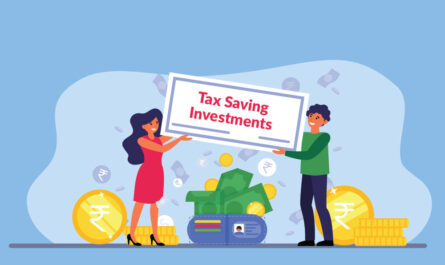In today’s fast-paced world, credit cards have become an essential financial tool for many individuals. However, unforeseen circumstances such as job loss, medical emergencies, or unexpected expenses can sometimes lead to overwhelming credit card debt.
In such situations, credit card relief programs can provide much-needed assistance. This article aims to provide a comprehensive guide to understanding credit card relief programs, including their benefits, eligibility criteria, and available options.
Page Contents
What are Credit Card Relief Programs?

Credit card relief programs are financial assistance initiatives designed to help individuals who are struggling with excessive credit card debt. These programs offer various strategies and resources to alleviate the burden of debt, negotiate with creditors, and provide a structured approach to debt repayment.
Benefits of Credit Card Relief Programs
- Debt Consolidation: Many credit card relief programs offer debt consolidation options, allowing individuals to combine multiple credit card balances into a single, more manageable payment. This simplifies the repayment process and may also result in lower interest rates. Debt consolidation can streamline finances, reduce the number of monthly payments, and provide a clearer overview of the debt situation.
- Lower Interest Rates: Some relief programs negotiate with creditors to reduce interest rates, enabling individuals to pay off their debt more efficiently. This can significantly decrease the total amount owed over time. Lower interest rates mean a larger portion of the payments goes toward the principal debt, accelerating the repayment process.
- Debt Settlement: In certain cases, credit card relief programs may negotiate with creditors to settle the debt for a reduced amount. This option is typically considered when an individual is unable to repay the full debt but wants to avoid bankruptcy. Debt settlement can provide a viable alternative, allowing individuals to resolve their debt with a lump-sum payment or structured settlement agreement.
- Financial Counseling: Many relief programs provide access to financial counseling services to help individuals develop better money management skills, create budgets, and establish healthy financial habits. Financial counseling offers personalized guidance and support, empowering individuals to make informed financial decisions, avoid future debt problems, and build a solid foundation for long-term financial stability. These services may include educational resources, workshops, and one-on-one counseling sessions.
Eligibility for Credit Card Relief Programs

Eligibility criteria may vary depending on the specific relief program. However, some common factors that are typically considered include:
- Demonstrated Financial Hardship: Applicants must demonstrate genuine financial hardship, such as job loss, medical emergencies, or other unforeseen circumstances that have significantly impacted their ability to repay their credit card debt. This can involve providing documentation or evidence of the hardship, such as termination letters, medical bills, or income reduction statements. Showing the extent of the financial burden is crucial in establishing eligibility for relief programs.
- Minimum Debt Threshold: Relief programs often require applicants to have a minimum amount of outstanding credit card debt to be eligible. This threshold can vary but is generally around $5,000 or more. It’s important to note that these programs are typically designed for individuals with substantial debt and may not be suitable for those with lower debt amounts. However, there may be alternative options available for individuals with smaller debt burdens.
- Good-Faith Effort: Applicants are usually expected to demonstrate a good-faith effort to repay their debts before seeking assistance through a relief program. This can include making consistent minimum payments or attempting negotiations with creditors. Providing evidence of these efforts, such as bank statements or payment history records, can strengthen the eligibility assessment. It showcases a genuine commitment to resolving the debt issue and suggests that other options have been explored before seeking relief programs.
Available Credit Card Relief Options:

- Debt Management Plans (DMPs): DMPs are offered by credit counseling agencies and involve the development of a structured repayment plan. The agency negotiates with creditors for reduced interest rates and fees, allowing individuals to pay off their debt over a set period, usually three to five years. DMPs also provide financial education and budgeting assistance to help individuals manage their finances more effectively. By adhering to a DMP, individuals can regain control of their financial situation and work towards becoming debt-free, fostering long-term financial stability.
- Debt Settlement: This option involves negotiating with creditors to settle the debt for a reduced lump-sum payment. Debt settlement programs aim to reach an agreement where the individual pays a portion of the total debt, and the remaining balance is forgiven. It’s crucial to work with a reputable debt settlement company that can navigate the negotiation process and protect your rights as a consumer. However, it’s important to note that debt settlement may have negative impacts on credit scores and may result in taxable income if the forgiven debt exceeds $600.
- Balance Transfer: Some credit card relief programs recommend transferring high-interest credit card balances to cards with lower or zero interest rates for a specified introductory period. This allows individuals to save on interest and pay off their debt more efficiently. However, it’s essential to consider any balance transfer fees and the long-term interest rates after the introductory period ends. Additionally, responsible financial management is necessary to avoid accumulating more debt and to maximize the benefits of balance transfer options.
- Bankruptcy: While considered a last resort, bankruptcy may be an option for individuals facing extreme financial distress. However, it is important to consult with a qualified bankruptcy attorney to understand the consequences and implications of filing for bankruptcy. They can guide you through the complex legal process and determine if bankruptcy is the best course of action based on your specific circumstances. It’s crucial to note that bankruptcy can have long-lasting effects on creditworthiness and may impact the ability to secure loans or credit in the future. Exploring alternative solutions and considering the potential ramifications is advisable before proceeding with bankruptcy.
Conclusion
Credit card relief programs offer viable solutions for individuals burdened with excessive credit card debt. By understanding the available options, benefits, and eligibility criteria, individuals can make informed decisions to regain control of their financial well-being. Remember to research and carefully assess the credibility of relief programs before enrolling, seeking advice from reputable financial professionals or credit counseling agencies to ensure the best possible outcome.






